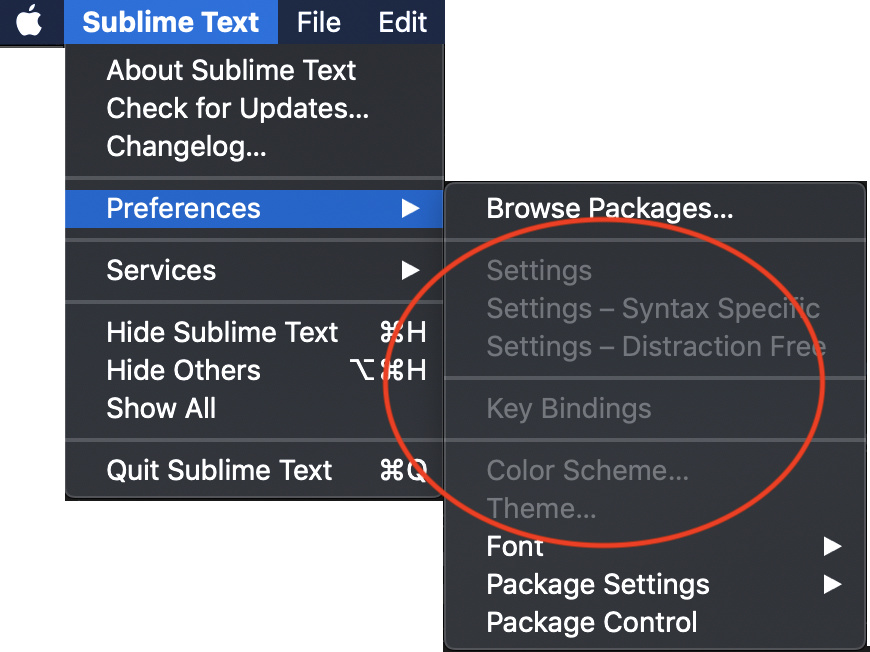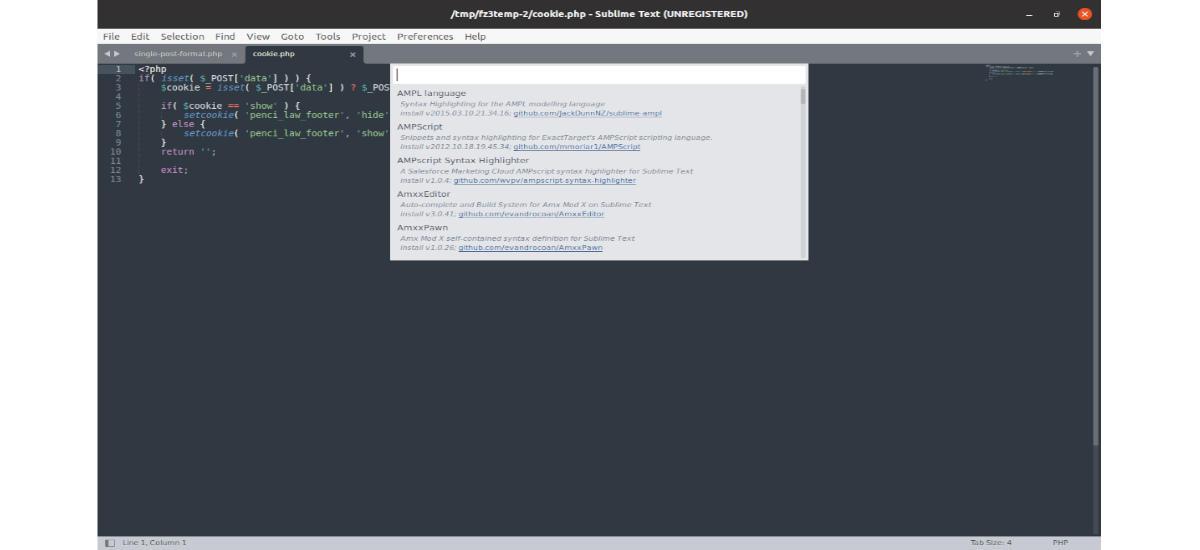

- SUBLIME PACKAGE CONTROL MAC HOW TO
- SUBLIME PACKAGE CONTROL MAC MAC OS X
- SUBLIME PACKAGE CONTROL MAC INSTALL
- SUBLIME PACKAGE CONTROL MAC CODE
If you feel don't comfortable with Vintage mode or just want to switch back in normal mode. Vim is the default text editor for Mac, Linux, and Windows (if Windows has.
SUBLIME PACKAGE CONTROL MAC INSTALL
If you're using wbond's sublime package control, that's the easy way to install SublimeServer, I strongly recommend you use package control to install SublimeServer, it will auto update when a new version SublimeServer is available. Installation Install with Package Control.
SUBLIME PACKAGE CONTROL MAC MAC OS X
and the command would be Package Control: Enable Package. SublimeServer has been test on Mac OS X 10.7+, Windows XP+ and linux. Open Command Palette by SHIFT+CTRL+P in Windows or CMD+SHIFT+P in Mac

There's away without using Package Control but for this lesson I show you the quick one.
SUBLIME PACKAGE CONTROL MAC HOW TO
Click this if you don't know how to install Package Control. > Note : Package Control must be installed.
SUBLIME PACKAGE CONTROL MAC CODE
If you want to code faster but you want to use Sublime Text features then Vintage mode is for you. Sublime Text provides Vintage mode or Vi mode but it set to disable by default. An additional file, Symbol List Prototype.tmPreferences, was added to include function prototype attributes in the symbol list.Many Sublime Users don't know about this. I also modified Symbol List Function.tmPreferences to do additional processing of function names with regexes, to strip out extraneous characters (like "function" and "= function()") before showing them in the symbol list. I modified Symbol List Banned.tmPreferences to specifically match object instantiation and console.log calls, and set them to not show up in the symbol list. There is a file, Symbol List Banned.tmPreferences, in the JavaScript package which ostensibly is supposed to filter out some specific sub-namespaces from the symbols list, but it doesn't really work. Specifically, it puts a lot of tokens in the entity.name.* namespaces that probably shouldn't be.

odd decisions on what namespace to put certain tokens in. The default JavaScript.tmLanguage makes some.

The most reliable way I've found to fix this is to close all open JavaScript files and quit Sublime (it's important that all JS files are closed when Sublime exits.) Then delete the Index and Cache subdirectories in your Sublime user data directory (the parent of the Packages directory.) In Mac OS X, I've also had to delete ~/Library/Caches/com.sublimetext.3 (or com.sublimetext.2). In some cases, especially with Sublime Text 3, the symbols list of files that have been previously opened may not refresh with the improved symbols. Install via package control (search for 'Better JavaScript').Īlternatively, cd to you Sublime packages directory, then: git clone 'Sublime Better JavaScript' This package has been tested on Sublime Text 2 and 3. It also fixes how these symbols are displayed in the symbol list, so that only the function names are shown. This project fixes Sublime so only named function definitions and function prototype attributes show up in the symbol list. The default JavaScript language definition in Sublime Text has quirky symbol identification, and fills your symbols list with noise like anonymous functions, object instantiation, and even calls to console.log(). This package is an improved version of Sublime Text's JavaScript package, focused mainly on improving symbol navigation. View the Project on GitHub int3h/sublime-better-javascript Fixes to Sublime Text's JavaScript handling


 0 kommentar(er)
0 kommentar(er)
